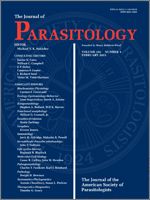Raising goats in settings that are highly contaminated with oocysts of Toxoplasma gondii may contribute significantly to human exposure to this zoonotic parasite. Increasing consumption of young goats in countries where goats are frequently reared in backyards that are also homes to cats (the definitive host of this parasite) elevates such concern. To date, there has been little attention to either the prevalence or genotypic characteristics of T. gondii isolates in young ruminant food animals in Europe. Here, we estimated the prevalence of T. gondii goat-kids raised in backyards and slaughtered for human consumption during Easter. We collected 181 paired samples of serum and diaphragm. Serum samples were analyzed by enzyme-linked immunosorbent assay for antibodies against T. gondii, and muscle tissues were analyzed by polymerase chain reaction to detect T. gondii DNA. Thirty-two diaphragm samples were also bioassayed in mice, and the isolates were genotyped using microsatellite markers. The overall seroprevalence of T. gondii infection in goat-kids was 33.1% (60/181; 95% confidence interval [CI] 26.3–40.5%), and T. gondii DNA was found in 6.1% (11/181; 95% CI 3.1–10.6) of the diaphragm samples. We isolated the parasite from 2 of 32 goat-kids, and the T. gondii strains belonged to genotype II. The results showed that 1/3 of 3-mo-old goats may be infected with T. gondii, and their consumption during Easter (as barbecue) may seriously compromise food safety as a result.
BioOne.org will be down briefly for maintenance on 17 December 2024 between 18:00-22:00 Pacific Time US. We apologize for any inconvenience.
How to translate text using browser tools
1 February 2015
Traditional Goat Husbandry May Substantially Contribute to Human Toxoplasmosis Exposure
Anamaria I. Paştiu,
Daniel Ajzenberg,
Adriana Györke,
Ovidiu Şuteu,
Anamaria Balea,
Benjamin M. Rosenthal,
Zsuzsa Kalmár,
Cristian Domşa,
Vasile Cozma
ACCESS THE FULL ARTICLE

Journal of Parasitology
Vol. 101 • No. 1
February 2015
Vol. 101 • No. 1
February 2015




